
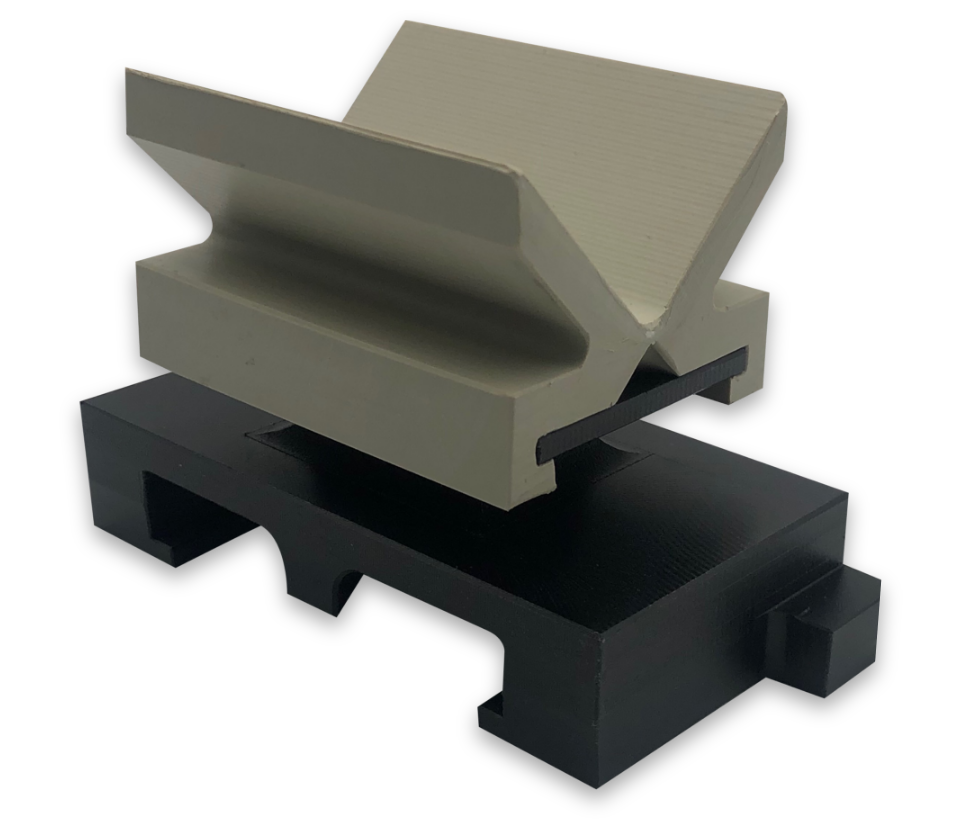
About Our Applications
Wherever you look, you’ll find plastics. They make lives easier, safer, cleaner and even more enjoyable. Gantiel Vensott’s range of materials supports and satisfies criteria across multiple applications occurring as many things like guards, levers, bearings, gears and cranks. Certain variants contain additives that make them bacteria or fire-resistant, some additives give multiple colours, or flexible whilst others making them insulators.
Plastics aid the durability, sustainability and long-lasting design and construction in buildings, homes, and infrastructure such as bridges. Consumer goods are durable, lightweight and even affordable as they contain plastic. Varieties in sports are made with plastic, such as helmets, mouth guards, goggles & protective padding to ensure safety in sports. Rugged plastics shells covering helmets and pads help protect heads, joints, and bones.
Plastics have improved and contributed to the performance, safety, and fuel efficiency in automotive. In product packaging, plastic helps to protect and preserve goods, and also reduces weight in transportation. Thus, it saves fuel and reduces greenhouse gas emissions.
Gantiel Vensott are importers, stock holders and distributors of engineering plastics materials in semi-finished shapes such as rods, sheets, tubes and tape. Whatever your needs, our modern warehouse stocks a wide range of substrates to satisfy your specific and individual requirements. Our worldwide network ensures supply of niche and hard to find types.
The wide range of Gantiel Vensott’s materials are used across a variety of applications.
HDPE
High Density PolyEthylene
Used to manufacture chemical drums, jerry cans, carboys, toys, picnic ware, household and kitchenware, cable insulation, carrier bags & food wrapping material.
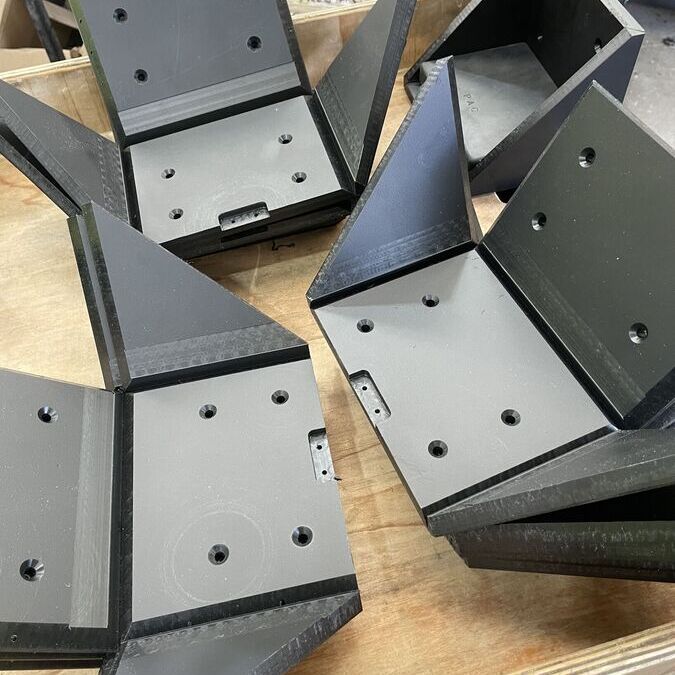
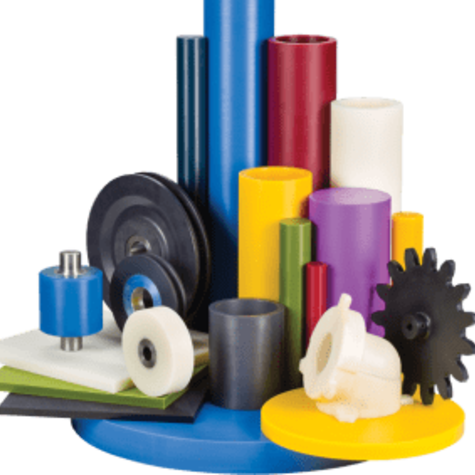
Nylon
Nylon fibres are used in textiles, fishing lines and carpets. Nylon films are used for food packaging, offering toughness and low gas permeability, and coupled with its temperature resistance, for boil-in-the-bag food packaging. Moulding and extrusion compounds find many applications as replacements for metal parts, for instance in car engine components. Intake manifolds in nylon are tough, corrosion resistant, lighter and cheaper than aluminium (once tooling costs are covered) and offer better air flow due to a smooth internal bore instead of a rough cast one. Its self-lubricating properties make it useful for gears and bearings. Electrical insulation, corrosion resistance and toughness make nylon a good choice for high load parts in electrical applications as insulators, switch housings and the ubiquitous cable ties. Another major application is for power tool housings.
PEEK
Polyether ether ketone (PEEK) is a colourless organic thermoplastic polymer in the polyaryletherketone (PAEK) family, used in engineering applications. PEEK is used to fabricate items for demanding applications, including bearings, piston parts, pumps, high-performance liquid chromatography columns, compressor plate valves, and electrical cable insulation. It is one of the few plastics compatible with ultra-high vacuum applications, which makes it suitable for aerospace, automotive, teletronic, and chemical industries. PEEK is used in medical implants, e.g., use with a high-resolution magnetic resonance imaging (MRI), for creating a partial replacement skull in neurosurgical applications. PEEK is used in spinal fusion devices and reinforcing rods. It is radiolucent, but it is hydrophobic causing it to not fully fuse with bone. PEEK seals and manifolds are commonly used in fluid applications. PEEK also performs well in high temperature applications (up to 500 °F/260 °C). Because of this and its low thermal conductivity, it is also used in FFF printing to thermally separate the hot end from the cold end.
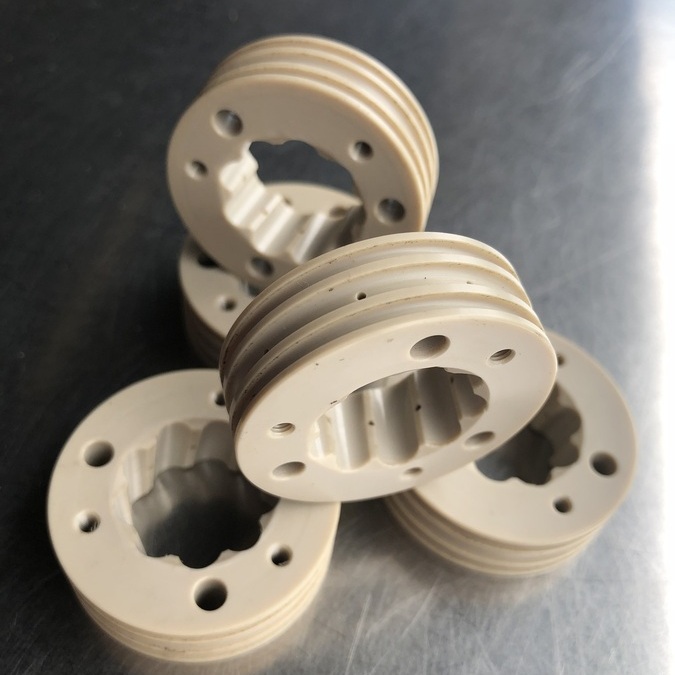

PET/PETP
Polyethylene terephthalate
Polyethylene terephthalate (sometimes written poly(ethylene terephthalate)), commonly abbreviated PET, PETE, or the obsolete PETP or PET-P, is the most common thermoplastic polymer resin of the polyester family and is used in fibres for clothing, containers for liquids and foods, and thermoforming for manufacturing, and in combination with glass fibre for engineering resins. Recycled PET can be converted to fibres, fabrics, sheets for packaging and manufacturing automotive parts. Chemically, Polyethylene terephthalate is very much similar to Polybutylene Terephthalate. PET is highly flexible, colourless and semi-crystalline resin in its natural state. Depending upon how it is processed, it can be semi-rigid to rigid. It shows good dimensional stability, resistance to impact, moisture, alcohols and solvents. Commercially available PET grades include un-reinforced to glass reinforced, flame retardant and high flow materials for various engineering applications that typically require higher strength and or higher heat resistance. Addition of fillers like glass fibres, CNTs etc. help improve impact strength, surface finish, reduce warpage and several other benefits.
POM / Acetal
PolyOxyMethylene
Polyoxymethylene, also known as acetal, polyacetal, and polyformaldehyde, is an engineering thermoplastic used in precision parts requiring high stiffness, low friction, and excellent dimensional stability. POM is an engineering thermoplastic used in precision parts. It is characterised by its high strength, hardness and rigidity and often used in applications requiring high stiffness, low friction and excellent dimensional stability. The good dimensional stability and particularly good fatigue strength, as well as excellent machining ability, makes POM polymer a highly versatile engineering material, even for complex components. It is used in a wide range of components in the food, pharmaceutical and drinking water industries and in medical technology. Sliding applications and excellent for design solutions with snap fastenings or sliding parts such as bearing bushes, rollers and slide rails. Also used in electrical insulating parts, components with contact to water and for scratch proof high-gloss exposed parts.


PTFE
PolyTetraFluroEthylene
Polytetrafluoroethylene (PTFE) is a synthetic fluoropolymer of tetrafluoroethylene that has numerous applications. The commonly known brand name of PTFE-based compositions is Teflon. Polytetrafluoroethylene is a fluorocarbon solid (at room temperature), as it is a high-molecular-weight polymer consisting wholly of carbon and fluorine. PTFE is hydrophobic: neither water nor water-containing substances wet PTFE, as fluorocarbons demonstrate mitigated London dispersion forces due to the high electronegativity of fluorine. PTFE has one of the lowest coefficients of friction of any solid. PTFE is used as a non-stick coating for pans and other cookware. It is non-reactive, partly because of the strength of carbon–fluorine bonds, and so it is often used in containers and pipework for reactive and corrosive chemicals. Where used as a lubricant, PTFE reduces friction, wear, and energy consumption of machinery. It is commonly used as a graft material in surgical interventions. It is also frequently employed as coating on catheters; this interferes with the ability of bacteria and other infectious agents to adhere to catheters and cause hospital-acquired infections.
PVC
PVC is used for blocks, connectors, manifolds, connectors, nozzles, elbows, chemical resistant spouts, clamping mechanisms, tanks, vessels, chemical bunds, enclosures, fume cabinets, chemical ducting, splash covers, chemical valve bodies, chemical trays and many other applications.
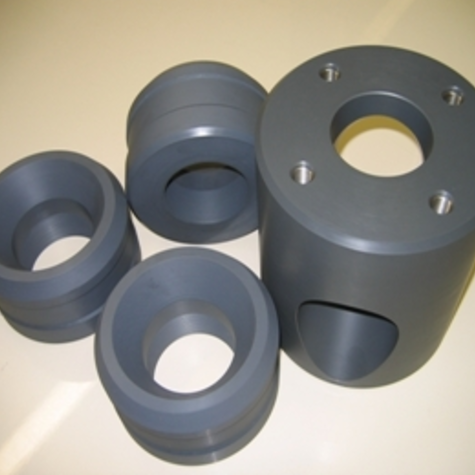
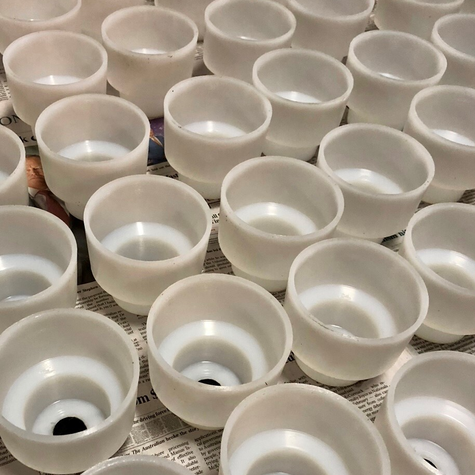
UHMW-PE
Ultra High Molecular Weight PolyEthylene
Polyethylene is a thermoplastic polymer with a variable crystalline structure and a vast range of applications depending on the particular type. It is one of the most widely produced plastics in the world, with tens of millions of tons produced worldwide each year. Ultra High Molecular Weight PolyEthylene (UHMWPE, UHMW) is a subset of the thermoplastic polyethylene. Also known as high-modulus polyethylene, (HMPE), it has extremely long chains, with a molecular mass usually between 3.5 and 7.5 million amu. The longer chain serves to transfer load more effectively to the polymer backbone by strengthening intermolecular interactions. This results in a very tough material, with the highest impact strength of any thermoplastic presently made. UHMWPE is odorless, tasteless, and nontoxic. It embodies all the characteristics of high-density polyethylene (HDPE) with the added traits of being resistant to concentrated acids and alkalis, as well as numerous organic solvents. It is highly resistant to corrosive chemicals except oxidizing acids; has extremely low moisture absorption and a very low coefficient of friction; is self-lubricating (see boundary lubrication); and is highly resistant to abrasion, in some forms being 15 times more resistant to abrasion than carbon steel. Its coefficient of friction is significantly lower than that of nylon and acetal and is comparable to that of polytetrafluoroethylene (PTFE, Teflon), but UHMWPE has better abrasion resistance than PTFE. The versatility of polyethylene has made it a popular plastic for countless industrial applications that require durability, low friction, and chemical resistance. Applications include UHMW wear strips, chain guides, packaging machinery parts, and marine dock fender pads.

